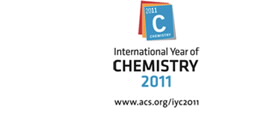EMBARGOED FOR RELEASE | August 28, 2011
Remedies for science’s shortage of superheroes
Note to journalists: Please report that this research was presented at a meeting of the American Chemical Society.
DENVER, Aug. 28, 2011 — One of the most serious personnel shortages in the global science and engineering workforce — numbering more than 20 million in the United States alone — involves a scarcity of real-life versions of Superman, Superwoman and other superheroes and superheroines with charm, charisma, people skills and communication skills.
That’s the premise behind an unusual symposium occurring here today at the 242nd National Meeting & Exposition of the American Chemical Society (ACS), the world largest scientific society. Entitled “Empowering Tomorrow’s Science Super Heroes,” it opens a discussion on how to give scientists a touch of the panache of the stock comic book and Hollywood characters who worked for the public good.
“We are seeking ways to equip scientists to better communicate and connect with the rest of society,” said Donna J. Nelson, Ph.D., an organizer of the session. It is among events at the meeting, which includes more than 7,500 scientific presentations, initiated by Nancy B. Jackson, Ph.D., ACS president. “The well-equipped superhero and superheroine has the communications skills to explain their work and the wonder and importance of science in an understandable way,” Nelson explained. “They have an awareness of public policy, how science connects with societal issues and even the ability to use a bit of humor.”
Nelson, who is with the University of Oklahoma and the Massachusetts Institute of Technology (MIT), said those skills add up to super-hero-level leaders who can inspire students, build public support for science and engage in key public policy decisions. Three of her models for science superheroes are the late Richard E. Smaley, Ph.D.; Harold Kroto, Ph.D.; and Robert F. Curl, Ph.D., who shared the 2005 Nobel Prize in Chemistry. “All three have been great organizers and leaders with superb social skills and just the kind of people to get kids interested in a career in science,” Nelson said.
Nelson also praised the Ig Nobel Prize, a parody of the Nobel Prizes, presented each year just before the real Nobels, but for 10 unusual or trivial "achievements" in scientific research. The self- proclaimed aim of the prizes is to "first make people laugh, and then make them think."
In addition to a presentation on the Ig Nobel Prize, the superheroes event will include speakers from NOVA’s public scientific information outreach, science cafes, science festivals and other projects that accomplish the superhero mission.
Presentations in the superheroes symposium with summaries of the presentations include:
- Science outreach: Demonstrating the value of science. Jennifer Larese, NOVA Outreach Coordinator. As individuals, people learn in slightly different manners and at different rates of speed. As informal science educators, scientists have a unique opportunity to use a variety of formats, experiences and media to engage and excite their audiences. Today there are countless new electronic media tools being created, almost daily. This presentation will briefly cover science outreach as a transmedia opportunity to connect with the public.
- Infusing moving media into instruction. Janet English, Instructor, El Toro High School, Mission Viejo, Calif. The main job for movie and TV superheroes is to save the world, and this is why many consider scientists superheroes. There are numerous ways that chemists and other scientists can affect children’s learning and help promote a love of science. The media also can play a pivotal role in students’ learning, and teachers can discuss how the media is used (or not used) in a thought-provoking way in the classroom. Scientists also can contribute to improving the mass media and how they can be role models for children.
- Creative engagement at science cafes. John Cohen., M.D., University of Colorado School of Medicine, Department of Immunology, Denver. A CafÉ Scientifique brings a scientist to talk directly with the public in pleasant relaxed surroundings. PowerPoint is banned to encourage dialog, rather than a lecture. There is no moderator, so the conversation finds its correct level without imposed dumbing-down. Speakers frequently say that talking at the CafÉ Sci was one of the best experiences of their career. So do audiences and organizers.
- Here come the Science Festivals! Kishore Hari, Director, Bay Area Science Festival. There are many ways that science festivals are raising awareness about a tremendous grassroots movement to celebrate and elevate science. Science festivals hope to rally whole communities to celebrate science as alive and local. Festivals aim to inspire youth to consider science studies and careers, and adults to cultivate a life-long interest in science and technology.
- The Ig Nobel Prize: Never dull, never boring awards in chemistry. Marc Abrahams, Editor, Annals of Improbable Research. The Ig Nobel Prizes honor achievements that first make people laugh, then make them think. Every year since 1991, 10 new prizes have been awarded in chemistry, physics and other fields. The winners journey to Harvard University for the gala ceremony in which genuine Nobel laureates shake their hands and hand them their prizes. The "Igs" have spawned live shows worldwide and video features. They celebrate the unusual, honor the imaginative — and spur people's interest in science, medicine and technology.
###
Media Contact
During the meeting, Aug. 25-Sept. 1, the contacts can be reached at: 303-228-8532
Michael Bernstein
202-872-6042
m_bernstein@acs.org
Michael Woods
202-872-6293
m_woods@acs.org


